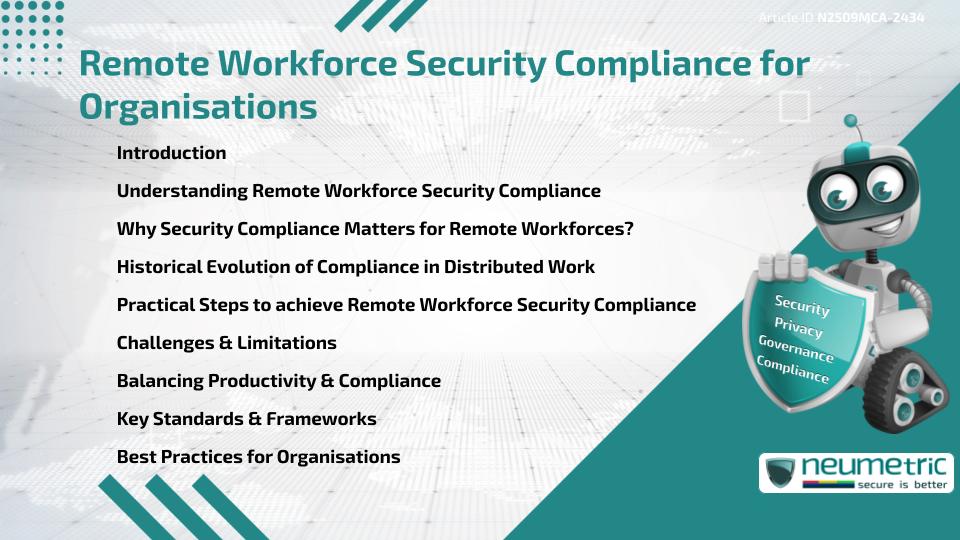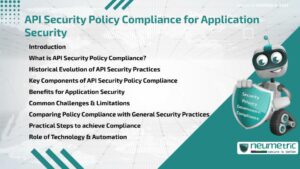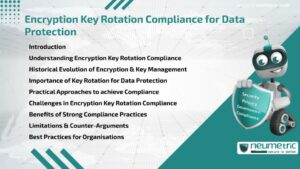Table of Contents
ToggleIntroduction
Remote workforce security compliance is the process of ensuring that Employees working outside traditional office settings follow organisational & regulatory security requirements. With the rise of distributed teams, protecting Sensitive Data, meeting legal obligations & maintaining consistent standards have become essential. This article explores what remote workforce security compliance entails, why it is crucial, the historical context, common challenges & actionable Best Practices for organisations of all sizes.
Understanding Remote Workforce Security Compliance
Remote workforce security compliance refers to aligning remote work practices with Security Policies & regulatory frameworks. This includes safeguarding devices, managing Access Controls, encrypting communications & training staff on secure behaviour. For organisations, compliance ensures that legal & contractual obligations are met while minimising Risks of data breaches & cyberattacks.
Why Security Compliance Matters for Remote Workforces?
Organisations handle Sensitive Data such as Financial records, Customer Information & Intellectual Property. Without proper compliance measures, remote environments expose these assets to significant Threats. Non-compliance can result in legal penalties, loss of Customer Trust & reputational damage. Ensuring remote workforce security compliance protects Business Continuity & strengthens resilience against evolving Risks.
Historical Evolution of Compliance in Distributed Work
Before the widespread adoption of digital communication, compliance was primarily enforced within physical offices. The rise of cloud computing, mobile devices & global connectivity transformed how compliance is managed. Events such as the introduction of the General Data Protection Regulation [GDPR] and similar frameworks forced organisations to extend Security Policies to home offices & public networks, marking a shift from centralised to distributed security models.
Practical Steps to achieve Remote Workforce Security Compliance
Organisations can take structured steps to ensure compliance:
- Implement multi-factor authentication & identity management tools.
- Provide secure devices & regularly update software.
- Use virtual private networks [VPNs] and encryption.
- Offer Continuous Training & awareness programs.
- Conduct regular Audits to verify adherence to Policies.
These steps align security protocols with regulatory requirements & reduce the Likelihood of incidents.
Challenges & Limitations
Remote workforce security compliance faces hurdles such as varied home network security, lack of Employee awareness & cost of implementing advanced controls. Moreover, ensuring consistent enforcement across multiple jurisdictions with different regulations can be complex. Organisations must balance strict controls with the need to maintain productivity & Employee flexibility.
Balancing Productivity & Compliance
Compliance efforts should not become barriers to efficient work. Too many restrictions may slow down processes, while too few create Vulnerabilities. Organisations must find a balance by implementing user-friendly security solutions & embedding compliance into daily workflows. Analogous to a well-fitted seatbelt, compliance should protect without hindering movement.
Key Standards & Frameworks
Several international standards support remote workforce security compliance:
- ISO 27001 for Information Security management.
- NIST Cybersecurity Framework for Risk Management.
- GDPR for Data Privacy.
- HIPAA for Healthcare Data Protection.
Adopting these standards helps organisations build credibility & consistency while addressing diverse Compliance Requirements.
Best Practices for Organisations
Practical measures to strengthen compliance include:
- Developing clear remote work Policies.
- Establishing Incident Response procedures.
- Encouraging a culture of accountability.
- Partnering with trusted service providers for cloud & communication solutions.
- Continuously monitoring & improving compliance strategies.
Embedding these practices ensures long-term sustainability of compliance efforts.
Conclusion
Remote workforce security compliance is essential for protecting organisational assets, meeting regulatory obligations & maintaining trust. By understanding its significance, addressing challenges & adopting Best Practices, organisations can create secure & resilient remote environments.
Takeaways
- Remote workforce security compliance protects Sensitive Data & reduces Risks.
- Balancing flexibility with security is key for effective compliance.
- International standards & frameworks guide organisations in meeting requirements.
- Training & awareness play a central role in compliance success.
- Continuous Monitoring strengthens resilience.
FAQ
What is remote workforce security compliance?
It is the process of ensuring that Employees working remotely follow security & regulatory requirements set by organisations & authorities.
Why is remote workforce security compliance important?
It safeguards Sensitive Data, prevents legal penalties & builds trust with clients & Stakeholders.
What challenges do organisations face in compliance?
Challenges include varied home network security, cost of tools & ensuring consistent Policies across jurisdictions.
Which standards support remote workforce security compliance?
Standards such as ISO 27001, NIST, GDPR & HIPAA provide guidance for secure & compliant practices.
How can organisations train Employees for compliance?
Regular awareness sessions, simulated attack exercises & clear communication of Policies help Employees understand their responsibilities.
Does compliance affect Employee productivity?
If designed well, compliance measures enhance rather than hinder productivity by embedding security into routine workflows.
What role does technology play in compliance?
Technology such as VPNs, multi-factor authentication & encryption tools enable secure remote operations & regulatory adherence.
Can small organisations achieve remote workforce security compliance?
Yes, small organisations can adopt scalable frameworks & affordable tools while fostering a culture of accountability.
Need help for Security, Privacy, Governance & VAPT?
Neumetric provides organisations the necessary help to achieve their Cybersecurity, Compliance, Governance, Privacy, Certifications & Pentesting needs.
Organisations & Businesses, specifically those which provide SaaS & AI Solutions in the Fintech, BFSI & other regulated sectors, usually need a Cybersecurity Partner for meeting & maintaining the ongoing Security & Privacy needs & requirements of their Enterprise Clients & Privacy conscious Customers.
SOC 2, ISO 27001, ISO 42001, NIST, HIPAA, HECVAT, EU GDPR are some of the Frameworks that are served by Fusion – a SaaS, multimodular, multitenant, centralised, automated, Cybersecurity & Compliance Management system.
Neumetric also provides Expert Services for technical security which covers VAPT for Web Applications, APIs, iOS & Android Mobile Apps, Security Testing for AWS & other Cloud Environments & Cloud Infrastructure & other similar scopes.
Reach out to us by Email or filling out the Contact Form…





